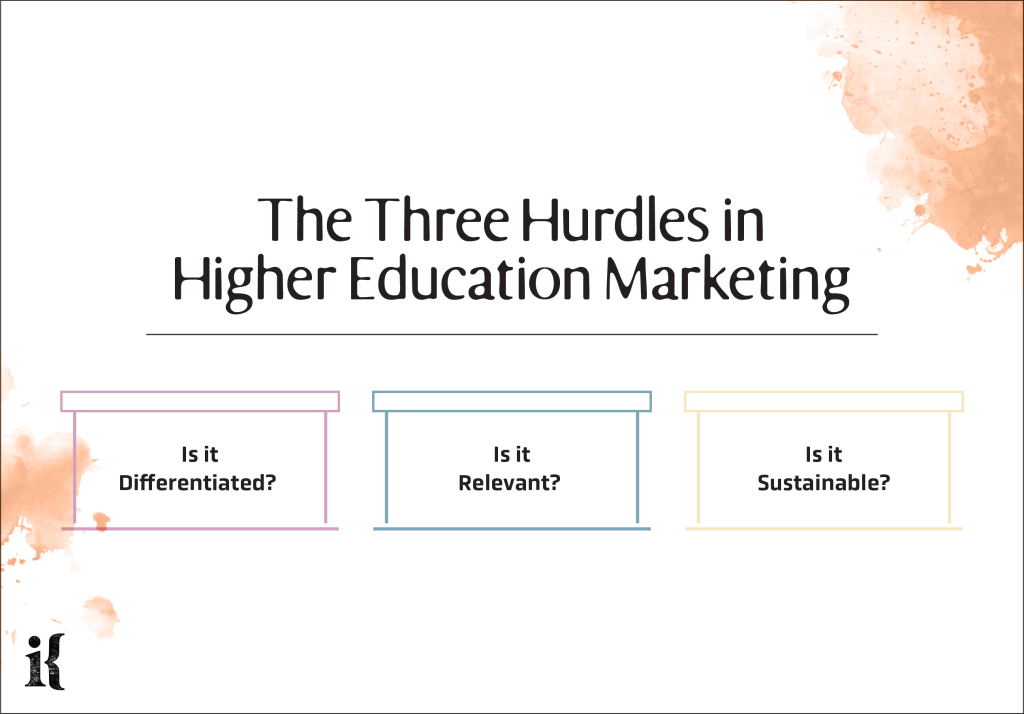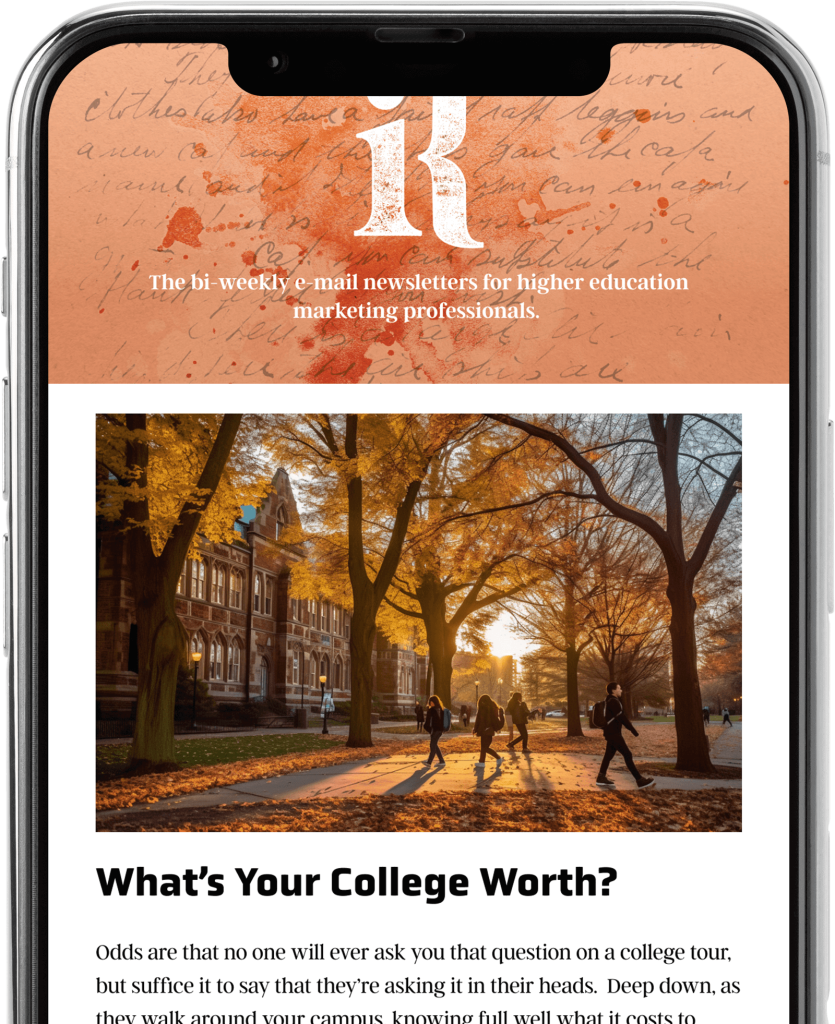Higher Education Marketing
The Three Hurdles in Higher Education Marketing

Whether you are contemplating a theme for your next capital campaign or honing in on a messaging platform for recruiting the next class of incoming students, gauging the potential effectiveness of a proposed approach can be challenging. How do we know that the campaign or platform isn’t trite or gimmicky? How do we ensure that it has depth and the potential to resonate? How can we ensure that a headline, theme, or platform has a strong foundation upon which to build?
Scott Galloway, Professor of Marketing at New York University’s Stern School of Business, offers a simple framework for approaching such challenges called The 3 Hurdles. The 3 hurdles represent a way of thinking that forces a creative or strategist to think through three distinctive boxes that an idea must check in order to have impact in the marketplace. Said differently, the 3 hurdles are challenges that an idea must overcome in order to qualify as resonant or foundational. They are as follows:
1. Is it differentiated? With respect to a concept, is it distinctive or different enough from other competing messages such that the message or idea has the potential to not only capture the attention of the audience but maintain it based upon new or different thinking? We know a differentiated notion when we see it because it’s disruptive, groundbreaking, or strikes us as something we haven’t seen before. Taken a step further, is it distinctive from the perspective or view of an objective third party? Too often organizations claim points of differentiation that aren’t really particularly different.
2. Is it relevant? Once we’ve overcome the first hurdle of differentiation, we have to ask ourselves the next most important question: is it relevant to our customer? Said more bluntly, does our point of differentiation actually matter to them? Does the customer care? A key litmus test for this is to critically ask ourselves if our school’s differentiator is something that makes us feel good in a way that may not matter to the student. Institutions may have pride in areas like rankings or the number of graduate scholars produced but the prospective student may not care to the degree the institution does. This doesn’t mean that things like rankings are unimportant to the overall strategy. Quite the contrary. But it does mean that they might not represent a core pillar of a strategy.
3. Is it sustainable? When we arrive at a point where we’ve established both differentiation and relevance in the mind of the prospective student, the final hurdle we must overcome is that of sustainability. That is to say, is this a position that we can hold onto over an extended period of time? A school like Stetson University can sustain an association with the founder of the company that made the Stetson Hat famous. West Point will never be outdone by another institution claiming knowledge of the Army’s military strategy. Vanderbilt University can sustain its well-regarded academic reputation within a picturesque and historic Nashville campus setting. This forces the university marketer to think beyond this year’s results, rankings, or achievements and consider what ground we can “own” and cultivate over time.

The 3 hurdles allows marketers to gauge the potential strength of a wide variety of marketing tactics—from a brand name or tagline to a campaign concept. Any creative pieces that check these three boxes—be they written, visual, or otherwise—stand a much better chance of flourishing than those that don’t. What’s more, the 3 hurdles is a tool that can be used at a much deeper level of higher education strategy. It’s a thought-provoking filter for key elements of strategic plans, decisions on new programming or facilities, and a compact foundation for conceiving and fundraising for capital investments.
Like what you're reading?
Subscribe to our newsletter to get the latest insights in Higher Education and thought leadership.


